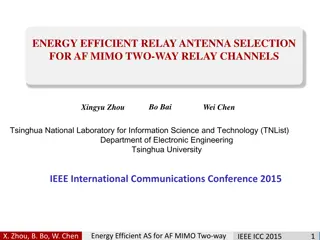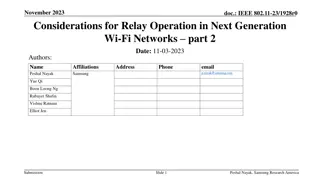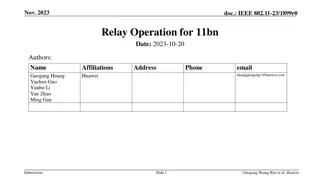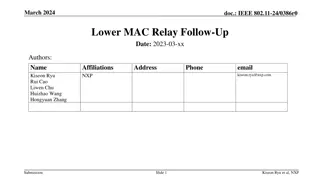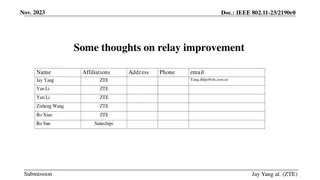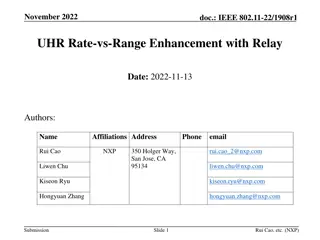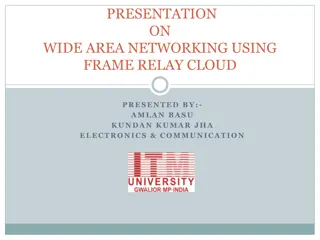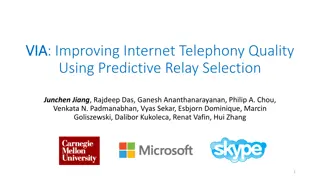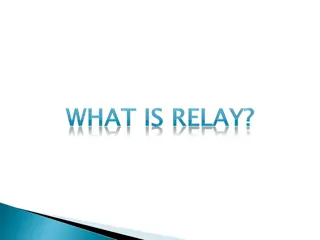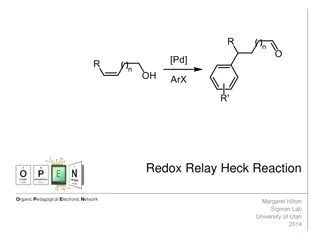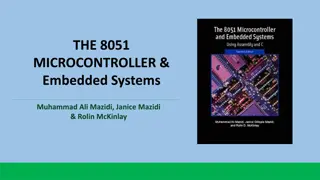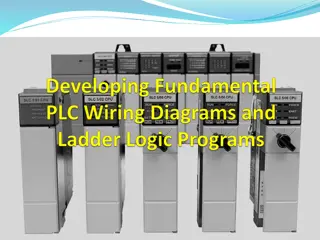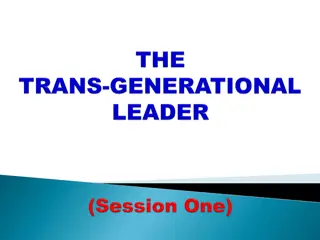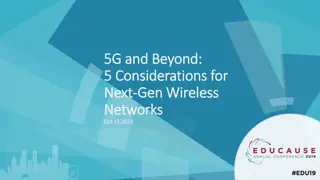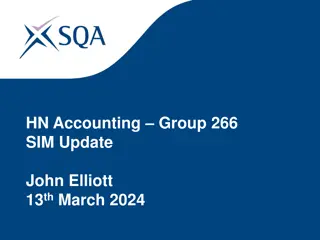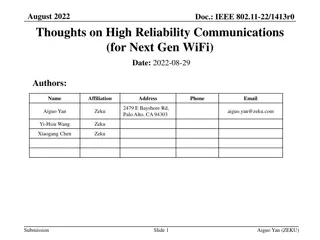Considerations for Relay Operation in Next-Gen Wi-Fi Networks
This presentation discusses the considerations and features for relay development in next-generation Wi-Fi networks, focusing on improving coverage in dead zones, enhancing throughput, and reducing energy consumption. It explores concepts like multi-traffic multiplexing in relay transmission and power-saving strategies for relay nodes and destination STAs.
Download Presentation

Please find below an Image/Link to download the presentation.
The content on the website is provided AS IS for your information and personal use only. It may not be sold, licensed, or shared on other websites without obtaining consent from the author. Download presentation by click this link. If you encounter any issues during the download, it is possible that the publisher has removed the file from their server.
E N D
Presentation Transcript
November 2023 doc.: IEEE 802.11-23/1955r0 Considerations for Relay Operation in Next Generation Wi-Fi Networks Part 3 Date: 11-06-2023 Authors: Name Yue Qi Affiliations Samsung Address Phone email Sunshine.qi@samsung.com Rubayet Shafin Peshal Nayak Boon Loong Ng Vishnu Ratnam Elliot Jen Submission Slide 1 Yue Qi, Samsung Research America
November 2023 doc.: IEEE 802.11-23/1955r0 Abstract In this presentation we provide our thoughts on directions and features for relay development in 11bn. Submission Slide 2 Yue Qi, Samsung Research America
November 2023 doc.: IEEE 802.11-23/1955r0 Motivation and Use Cases Extending the coverage for dead/weak zones, areas such as garage, attic, den, crawlspace, etc [1]. may suffer poor connectivity and bad performance. With the help of relays, the coverage hole can be filled. Boost throughput at range, e.g., smart devices such as TV, laptop/ipad supports WiFi, and high end home appliance can act as a relay and support each other to boost the throughput [2, 3]. Relays may reduce energy consumed by STAs. STAs can transmit frames at lower power due to shorter transmission distances. Submission Slide 3 Yue Qi, Samsung Research America
November 2023 doc.: IEEE 802.11-23/1955r0 Feature 1: Multi-traffic multiplexing in relay transmission Multi-traffic multiplexing: Besides being a relay to support other STAs for range extension, and the relay node, acting as a regular STA, can also have its own traffic. Use case: Consider a typical home environment, where a smart refrigerator can act as a relay. Using the same transmission to the refrigerator, the AP can deliver a video stream for the refrigerator itself (e.g. for family hub screen), and deliver data packets that need to be forwarded to a security camera outside the range of the AP, but within the range of the refrigerator. Relay may have its own DL/UL traffics with AP. Option 1: Using multi-link operation. AP may deliver the traffics to the relay-node via two different links. First link can be used to deliver frames that is intended for the relay node itself, and the second link can be used to deliver frames that is intended for the final destination node and needs to be forwarded. Option 2: Data demarcation. When the relay node receives the frame from the AP, it may first locate and retrieve its own message (data1). Then, it forwards the remaining message (data2) to the destination STA. Submission Slide 4 Yue Qi, Samsung Research America
November 2023 doc.: IEEE 802.11-23/1955r0 Feature 2: Power save for relay Power saving for the destination STAs The relay node may not have PS requirements of its own. But to coordinate the destination STA(s), the relay nodes may need to be cognizant of destination STA(s) PS schedules. Relay node itself may have PS requirement Relay node can use different PS time windows for relaying operation and its own UL/DL operation. Operations like TWT can be extended for harmonizing PS schedules of relay nodes and (source/destination) STAs TWT SP (UL/DL) TWT SP (UL/DL) TWT SP (relaying) STA1 source TWT SP (relaying) TWT SP (UL/DL) TWT SP (UL/DL) relay TWT SP (relaying) STA2 destination Submission Slide 5 Yue Qi, Samsung Research America
November 2023 doc.: IEEE 802.11-23/1955r0 Feature 3: Channel switch procedure in relay When the AP switches channel, the cell-edge STA(s) may not receive channel switch (CS) request. The relay node needs to forward any CS announcement. The AP needs to take into account the CS relay time before it switches to the target channel An example is depicted in the figure below. Switch time for AP AP ready to switch CS req. beacon PPDU AP source PPDU ACK CS resp. CS req. relay Base channel CS resp. ACK STA destination Base channel Target channel Note: Similar considerations should also be made for other operation/mode switch-related procedures. Submission Slide 6 Yue Qi, Samsung Research America
November 2023 doc.: IEEE 802.11-23/1955r0 Feature 4: MAP in relay operation Multiple Access Point (MAP) is considered as a key technology in 11bn. In the network, same relay resources may be shared by multiple APs. Scenario 1: AP1 and AP2 may be independently associated with the same relay. The relay may be managed to serve both sets of relay transmission elegantly. Scenario 2: AP1 and AP2 are coordinated and may provide additional convenience for relay source sharing. Scenario 3: Relay is also controlled by the MAP control center (MCC). It is possible that in a managed network the APs together with the relay nodes are controlled by the MCC, which provide an additional reliability and management. AP2 AP1 Relay STA2 STA1 Relay transmission set 1 (AP1, relay, STA1); Relay transmission set 2 (AP2, relay, STA2). MCC AP1 Relay Traffic steering would be necessary for relay resource sharing Case-1: AP1 and AP2 are operating on the same channel Case-2: AP1 and AP2 are operating on the different channels AP2 Submission Slide 7 Yue Qi, Samsung Research America
November 2023 doc.: IEEE 802.11-23/1955r0 Conclusion In this contribution, we discuss some features that may be considered for relay operation in 802.11bn: Procedures for multi-traffic relay operation Power save procedures for relay operation Channel switch in relay operation MAP in relay operation Submission Slide 8 Yue Qi, Samsung Research America
November 2023 doc.: IEEE 802.11-23/1955r0 References [1] UHR Rate-vs-Range Enhancement with Relay, IEEE 802.11-22/1908r1 [2] Thought for Range Extension in UHR, IEEE 802.11-23/0042r0 [3] Considerations for Relay Operation in Next Gen. Wi-Fi Networks, IEEE 802.11-23/1899r0 Submission Slide 9 Yue Qi, Samsung Research America



